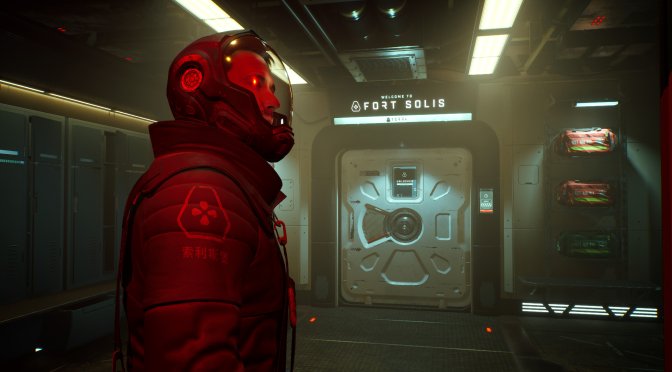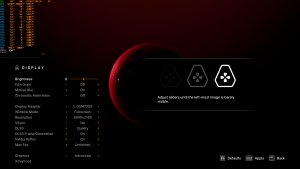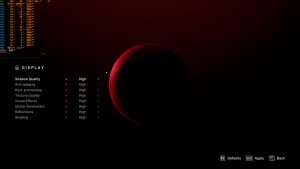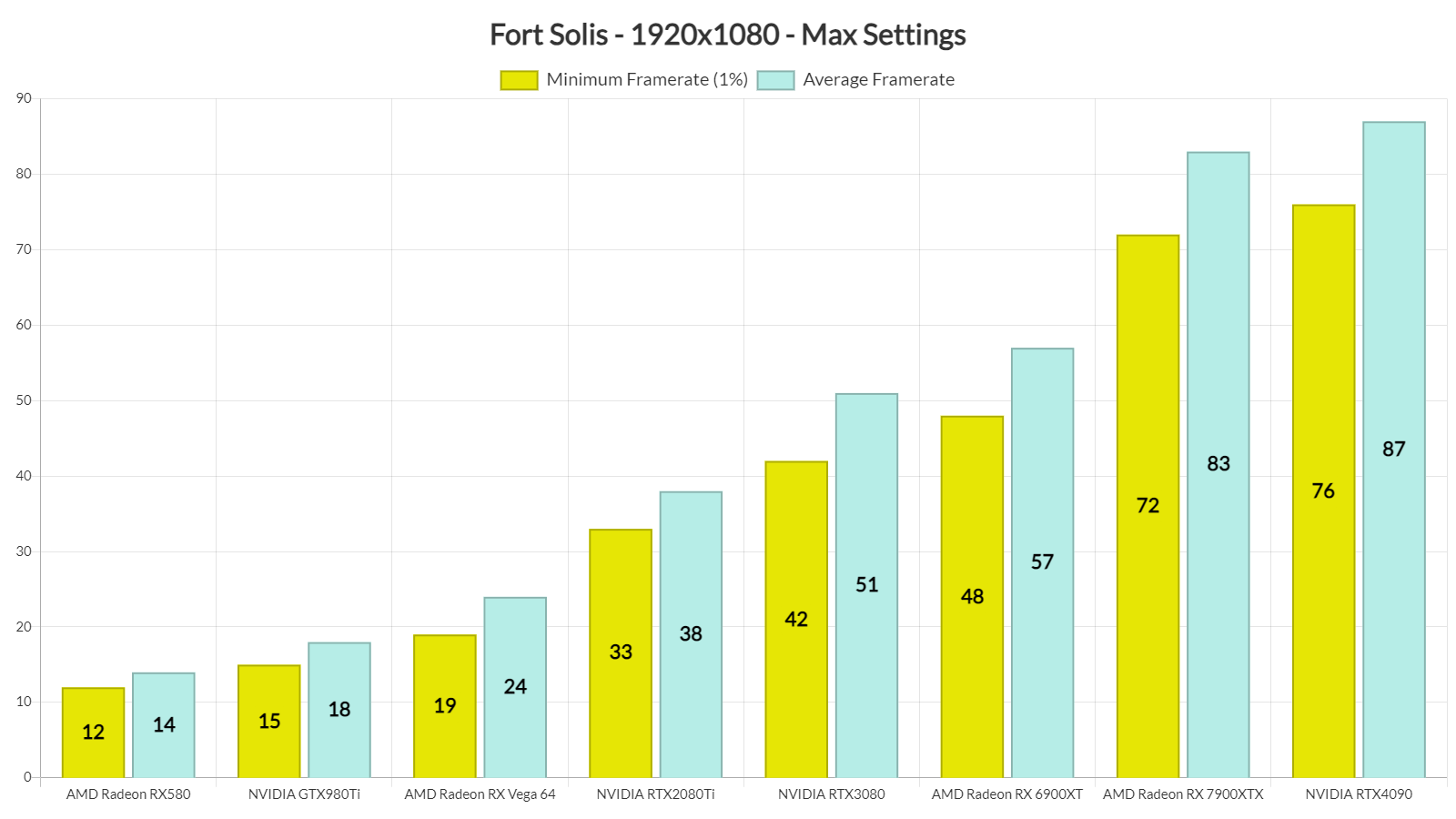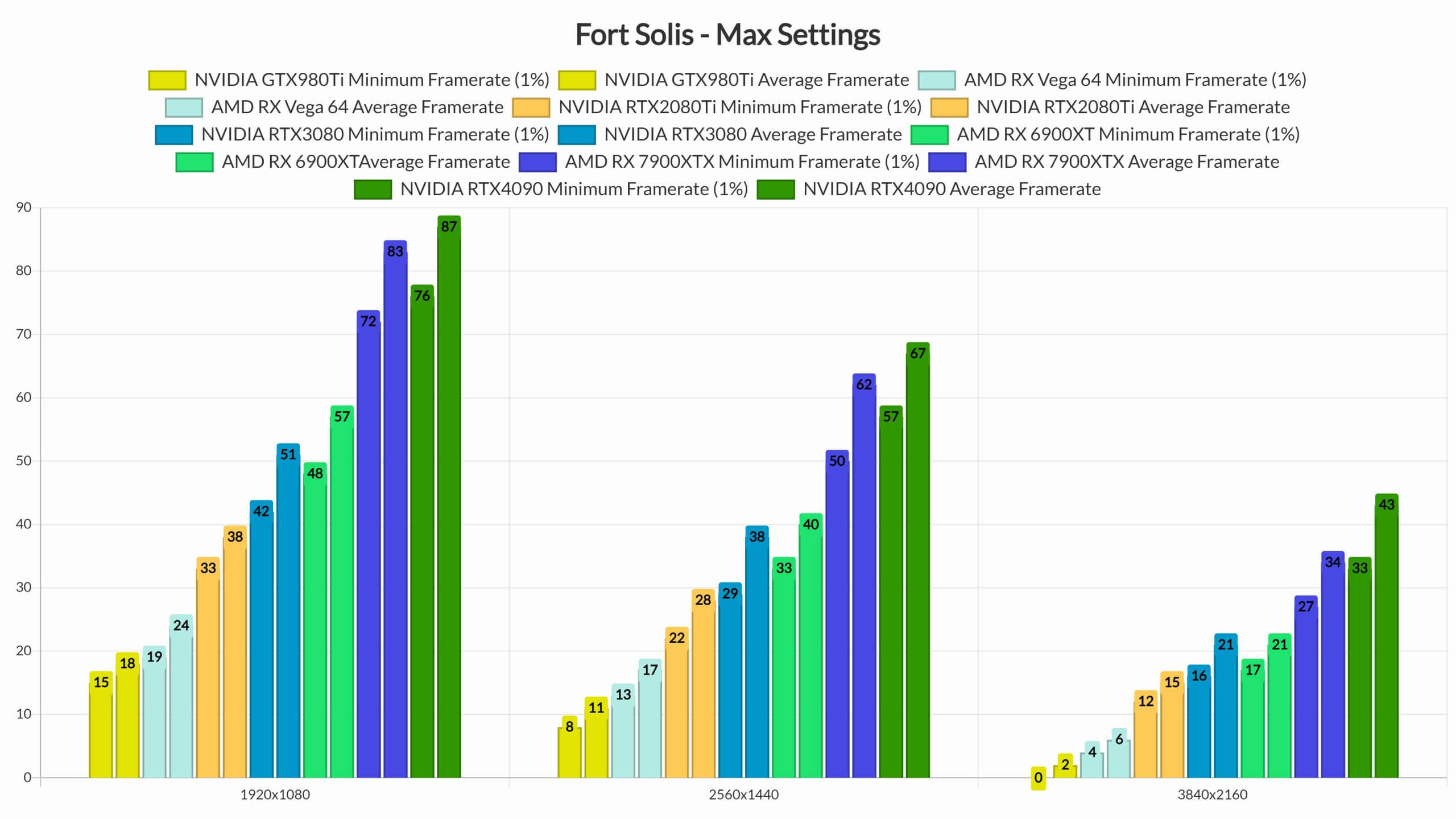Fort Solis is a new story-driven thriller by Fallen Leaf and Black Drakkar Games. Powered by Unreal Engine 5, it’s time to benchmark Fort Solis and examine its performance on the PC platform.
For our Fort Solis PC Performance Analysis, we used an AMD Ryzen 9 7950X3D, 32GB of DDR5 at 6000Mhz, AMD’s Radeon RX580, RX Vega 64, RX 6900XT, RX 7900XTX, NVIDIA’s GTX980Ti, RTX 2080Ti, RTX 3080 and RTX 4090. We also used Windows 10 64-bit, the GeForce 537.13 and the Radeon Software Adrenalin 2020 Edition 23.8.1 drivers. Moreover, we’ve disabled the second CCD on our 7950X3D.
Fallen Leaf and Black Drakkar Games have added a few graphics settings to tweak. However, similar to Immortals of Aveum, these PC graphics options don’t really do anything to improve the game’s performance. Here’s a video showcasing the game’s awful performance on the NVIDIA GeForce RTX 4090. As you can see, even on Low Settings, the NVIDIA RTX4090 is unable to come close to 60fps at Native 4K.
Fort Solis does not feature any built-in benchmark tool. Thus, for our GPU benchmarks, we used the first cut-scene. During my playthrough I found this scene to be among the most demanding ones. As such, it can give you a pretty good idea of how the rest of the game will run.
At Native 1080p/Max Settings, the only graphics cards that could run the game smoothly were the AMD Radeon RX 7900XTX and the NVIDIA RTX 4090. Surprisingly enough, the performance gap between these two GPUs was small (and nowhere close to what we saw in Immortals of Aveum). As said, both of these games use Unreal Engine 5 and take advantage of Nanite and Lumen. Thus, we were expecting to see a similar performance difference between these two GPUs. However, in Fort Solis, the AMD RX 7900XTX came close to the performance of the NVIDIA RTX4090.
At Native 1440p/Max Settings, there wasn’t any GPU that could offer a constant 60fps experience. Still, owners of a G-Synch monitor and an RTX4090 will be able to get a smooth experience (as 55-58fps are ideal framerates for G-Sync). And as for Native 4K/Max Settings, there isn’t any GPU that can come close to a 60fps experience.
As we’ve already reported, Fort Solis only supports DLSS 2 and DLSS 3. What this basically means is that AMD owners are simply f’ed. Seriously, there is no excuse for such a demanding game to only support NVIDIA DLSS, and not have support for AMD FSR 2.0 and Intel XeSS.
Graphics-wise, Fort Solis is a mixed bag. For starters, the fact that these indie developers have managed to create a game that looks like Fort Solis is commendable. Thanks to Nanite, there are no geometry or object pop-ins. All light sources can cast shadows, and the environments look actually great. All objects feel “grounded” and you’ll never get the “flatness” of old-gen games. This is one of the strongest perks of using Lumen as there won’t be scenes in which the game will lack ambient occlusion.
However, the game also suffers from major visual issues. For instance, Lumen produces some really noisy/square-ish artifacts. At times, these Lumen artifacts look absolutely HORRENDOUS. Not only that but the game handles lighting in a really weird way. Areas appear to be broken into small cells, and Lumen only works on the cell you are in. All other cells are completely dark, meaning that lights will form right in front of you (the moment you “enter” the next cell). This looks awful and breaks overall immersion. Moreover, we experienced major texture pop-ins when entering newer areas. Oh, and speaking of issues, there are numerous traversal stutters.
All in all, Fort Solis is a very demanding game that cannot scale on older GPUs. Similar to Immortals of Aveum, the graphics settings are useless as the performance gains in Fort Solis are minimal, even on Low settings. Again, it’s commendable what Fallen Leaf and Black Drakkar Games have managed to create. At times, Fort Solis can actually compete with the big boys (that is when Lumen and Nanite work as intended). However, the game has so many graphical artifacts and issues that can completely destroy its presentation, and we can’t simply overlook them. I don’t know whether the devs will be able to address them. In its current state, though, the game can in one moment look glorious and in the next moment look plainly awful!

John is the founder and Editor in Chief at DSOGaming. He is a PC gaming fan and highly supports the modding and indie communities. Before creating DSOGaming, John worked on numerous gaming websites. While he is a die-hard PC gamer, his gaming roots can be found on consoles. John loved – and still does – the 16-bit consoles, and considers SNES to be one of the best consoles. Still, the PC platform won him over consoles. That was mainly due to 3DFX and its iconic dedicated 3D accelerator graphics card, Voodoo 2. John has also written a higher degree thesis on the “The Evolution of PC graphics cards.”
Contact: Email

